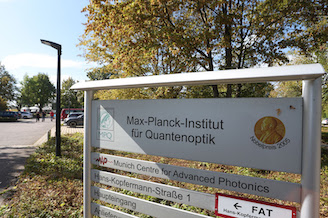By dpa correspondents I Tuesday, Oct. 03, 2023
BERLIN – This year’s Nobel Prize in Physics is awarded to Pierre Agostini, Ferenc Krausz and Anne L’Huillier – Krausz works as a scientist in Germany.
They received the prize for experiments that gave humanity new tools to explore the world of electrons in atoms and molecules, the Royal Swedish Academy of Sciences said on Tuesday. They were selected “for experimental methods that generate attosecond pulses of light for the study of electron dynamics in matter,” the academy said.
Ferenc Krausz conducts research as director at the Max Planck Institute of Quantum Optics (MPQ) in Garching, near Munich, and at Ludwig Maximilian University in Munich.
Anne L’Huillier works at Lund University in Sweden. Pierre Agostini is based at Ohio State University in the United States.
Fast-moving events flow into each other when perceived by humans, just like a film that consists of still images is perceived as continual movement, the academy said.
“If we want to investigate really brief events, we need special technology. In the world of electrons, changes occur in a few tenths of an attosecond – an attosecond is so short that there are as many in one second as there have been seconds since the birth of the universe.”
“Pierre Agostini, Ferenc Krausz and Anne L’Huillier have demonstrated a way to create extremely short pulses of light that can be used to measure the rapid processes in which electrons move or change energy,” according to a press statement.
The laureates’ experiments have produced pulses of light so short that they are measured in attoseconds, thus demonstrating that these pulses can be used to provide images of processes inside atoms and molecules, the academy said.
L’Huillier was teaching in Sweden when the call with the news of the award came from Stockholm. “So I picked the phone … the third or fourth time when you called.”
She said the prize means a great deal to her. “This is the most prestigious prize and I’m so happy to get this prize. It’s incredible. There are not so many women who get this prize. It’s very, very special.”
The Nobel Prize in Physics is the second of the week’s annual award announcements.
Last year, the Frenchman Alain Aspect, John Clauser of the US, and the Austrian Anton Zeilinger were jointly honoured for their groundbreaking research on “entangled quantum states.”
This year’s award week opened on Monday with the Nobel Prize in Medicine to Hungarian-born researcher Katalin Kariko and US scientist Drew Weissman for their work on mRNA vaccines against Covid-19.
Recipients of prizes in the fields of chemistry, literature and peace will be announced later this week. The economics award is due next week.
With the exception of economics, the prizes were endowed by Swedish industrialist Alfred Nobel (1833-96), the inventor of dynamite.
The actual awards – comprising a medal and a diploma – are set to be presented in a ceremony on December 10, the anniversary of Nobel’s death.
The Nobel Foundation this year increased the prize money per category by 1 million Swedish krona to 11 million krona ($1 million). If several laureates receive the award, the money is divided among them.
The Nobel Prize in Physics has been awarded almost every year since the first prize in 1901.
US physicist John Bardeen is the only laureate so far who has been awarded the prize twice, in 1956 and 1972.

